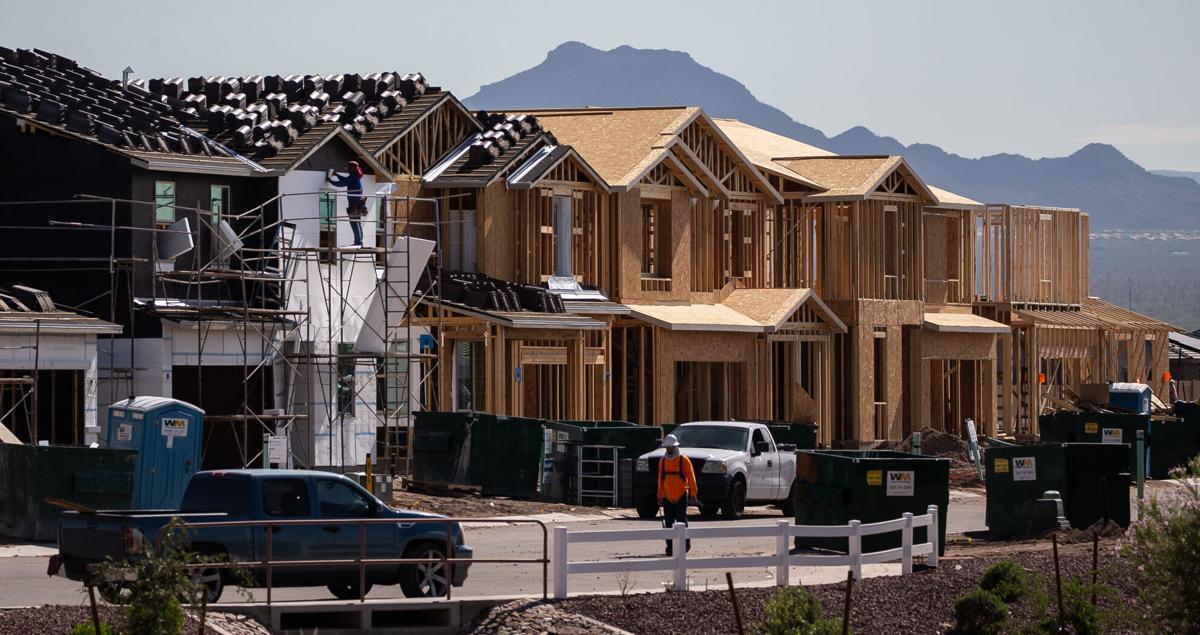Arizona’s housing market isn’t the only thing booming. So is Hispanic homeownership, according to a new market research report.
“Arizona is adding Hispanic homeowners faster than any other state in the nation”, said Marcela Fuentes, treasurer at the Tucson Association of Realtors. “The Hispanic community in Arizona is investing and consuming more and contributing to higher homeownership. Between 2020 and 2040 it is estimated that 70% of the new homeowners will be Latino.”
The recently released 2021 comprehensive Hispanic Market Research Report — covering Pima, Santa Cruz and Cochise counties — shows that in the past 10 years, homeownership among Tucson-area Hispanics has grown 12%, while homeownership has declined 11% for non-Hispanics.
In Pima County, 1 in 4 households is Latino, with over 100,000 homeowners.
“The Latino homebuying market is very significant,” Fuentes said. “Southern Arizona is prime for growth and the future is bright for homeownership. This year alone, the number of Latinos seeking to invest or buy property is almost three times as many as not-Hispanic, white buyers seeking to buy or invest in property.”
However, Fuentes explained that declining affordability has had a significant effect on homebuyers, mentioning that among the Latino community, not being able to save enough money for a down payment is the biggest challenge to owning a house.
Beyond housing, the 2021 report contains information on services and products purchased by the Hispanic community, in topics such as educational attainment, health care and tourism in an effort to assist businesses in reaching the fast-growing Hispanic market in Southern Arizona.
According to the Claritas Knowledge Center, Tucson-area Hispanics represent a large share of the total population: Pima County has 415,174 Hispanics (39%), Santa Cruz County has 39,479 Hispanics (85%), and Cochise County has 46,740 Hispanics (37%).
In this designated market area (DMA), since 2010, the number of Hispanics in Tucson has grown 19%. The report also highlights that the Hispanic population grew significantly between January 2020 and January 2021. in the next 5 years, the projected growth is 12% — 5 points over the non-Hispanic population.
Additional data shows that Hispanics have larger households, averaging 3.5 persons per home compared to the non-Hispanic average of 2.6%. Also, 89% of this population are of Mexican descent.
Here are more takeaways from the report:
Hispanic workforce
The recently released report shows that Hispanics over the age of 18 work in many different industries.
At the top of the rankings are occupations related to sales (14%), building and grounds cleaning and maintenance (13%), and management (9%).
The population holds both full-time and part-time jobs in sectors such as education, personal care, office and administrative support, health care and transportation, the report found.
Nearly 17,000 Hispanics in the Tucson-area are self-employed, while nearly 16,000 are small business owners, the report said.
Higher education
Kasey Urquidez, vice president of enrollment management and dean of undergraduate admissions, shared state, local and university data that reflect the participation of the Hispanic community in higher education programs.
In 2019, based on data from the U.S. census, put together by MAP (Making Action Possible), in Southern Arizona, approximately 25% of Tucson residents indicated that they have some college education, compared to about 20% in the nation.
The report shows that nearly half of Tucson-area adults who plan on extending their education in the next 12 months are Hispanic, which translates into 35,596 people 18 years and older.
Over 12,000 students identify as Hispanic at the University of Arizona, said Marla Franco, assistant vice provost for the Hispanic Serving Institution Initiatives at UA. Thirty-eight percent are the first in their families to attend college.
At Pima Community College, almost 50% of students are Hispanic, and 44% at Cochise College.
Travel habits
Phoenix, Mexico, San Diego, Los Angeles and Las Vegas were among the top destinations preferred by Hispanics living in Tucson, the report said.
Types of trips taken in the past 12 months, according to the report, included family vacations (47%), beach or lake vacations (33%), mountain vacations (19%), and theme park vacations (18%), among others.
Local venues of interest identified in the report included the Reid Park Zoo, Tombstone, the Tucson Rodeo and the Arizona-Sonora Desert Museum.
Learn more
“Statistics, numbers and data tell stories about who we are, how we are doing and where we are going,” said Tucson Hispanic Chamber of commerce President and CEO Rob Elias.
Arizona’s Hispanic purchasing power ranked seventh in the country in 2020, with the population controlling 18% of the state’s total purchasing power.
With a purchasing power of $63 billion in 2020, 35% growth is expected in the next five years for a total of $84.8 billion, the report said.
Professional services identified as having room to grow in the Hispanic market included financial planning, insurance and real estate agencies, accounting and tax preparation.
Learn more from the report, now available online at tucsonhispanicchamber.org.





